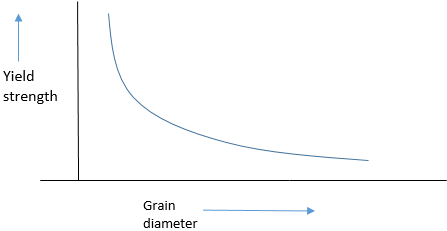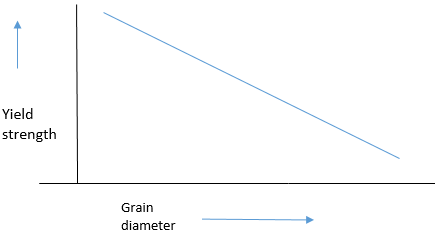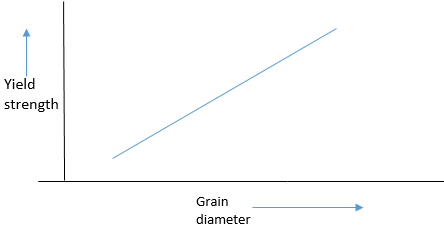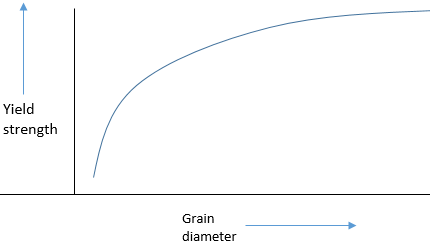This set of Mechanical Metallurgy Multiple Choice Questions & Answers (MCQs) focuses on “Strengthening Mechanisms – Grain Boundaries & Deformation – 1”.
1. If the mobility of dislocation is high, the strength of crystal will be ___________
a) low
b) high
c) not affected
d) cannot predict
View Answer
Explanation: If the mobility is high, it will be easier to deform the material, so the strength will be automatically lowered down.
2. For low angle grain boundary, the misfit angle is in the range of __________
a) 1°
b) 10°
c) 90°
d) 0.001°
View Answer
Explanation: Low angle grain boundaries are the one where misfit between the two adjacent grains is in order of few degrees. The misorientation in these boundaries is very low.
3. The grain boundary is made of a regular array of edge dislocation at define spacing. In the case of low angle grain boundary, the distance between dislocation array will be small, and for high angle grain boundaries, it will be large.
a) True
b) False
View Answer
Explanation: In the case of low angle grain boundary, the distance between the dislocation array will be large because, to accommodate the mismatch, small number of dislocations are required. For the high angle grain boundary, it will be necessary be a large number of dislocations, so interspacing will be low.
4. High angle grain boundary will have ________________ and low angle grain boundary will have _______________
a) higher surface energy, low surface energy
b) low surface energy, Higher surface energy
c) higher surface energy, Higher surface energy
d) low surface energy, Low surface energy
View Answer
Explanation: Higher angle grain boundary will have high surface energy because the number of dislocation per unit length is high for high angle grain boundary and low for low angle grain boundary.
5. The strain hardening will be most effective in _________
a) fine grain size metal
b) coarse grain size metal
c) fine grain size metal with solute atom
d) coarse grain size metal with solute atom
View Answer
Explanation: The fine grain size metal will have more grain boundary area to restrict the movement of dislocation on strain hardening. The solute atom will be an added advantage in strain hardening.
6. Hexagonal closed packed materials is generally not ductile.
a) True
b) False
View Answer
Explanation: The necessary condition for shape change by von Mises is that crystal should possess a minimum of five independent slip system and HCP structure don’t have five independent slip system, which makes it less plastic.
7. The Ashby model does not define ________________
a) statistically stored dislocation
b) geometrically stored dislocation
c) deformation of polycrystal
d) deformation of single crystal
View Answer
Explanation: The Ashby model tells about the deformation of polycrystal and type of dislocation present and produced in deformation. The deformation of a single crystal is defined by Schmid law.
8. The equicohesive temperature defines the limit of temperature above which __________
a) the grain interior is stronger than grain boundary
b) the grain boundary is stronger than grain interior
c) recrystallization takes place
d) dislocation become mobile
View Answer
Explanation: The equicohesive temperature is generally around half of the melting point; at this high temperature, the grain boundary sliding becomes prominent. This limits the ability of grain boundary to restrict the dislocation movement, and it loses its strength.
9. According to hall-patch, the correct relationship between the grain diameter and yield strength will be which of the following?
a)

b)

c)

d)

View Answer
Explanation: The Hall-Patch relationship states that,
->σo=σi+kD-1/2
Where D is the grain diameter, and σo is yield strength of the material. It is seen that strength increases as the grain diameter decreases.
Sanfoundry Global Education & Learning Series – Mechanical Metallurgy.
To practice all areas of Mechanical Metallurgy, here is complete set of 1000+ Multiple Choice Questions and Answers.
If you find a mistake in question / option / answer, kindly take a screenshot and email to [email protected]
- Practice Metallurgical Engineering MCQs
- Check Metallurgical Engineering Books
- Apply for Metallurgical Engineering Internship
- Check Mechanical Metallurgy Books
